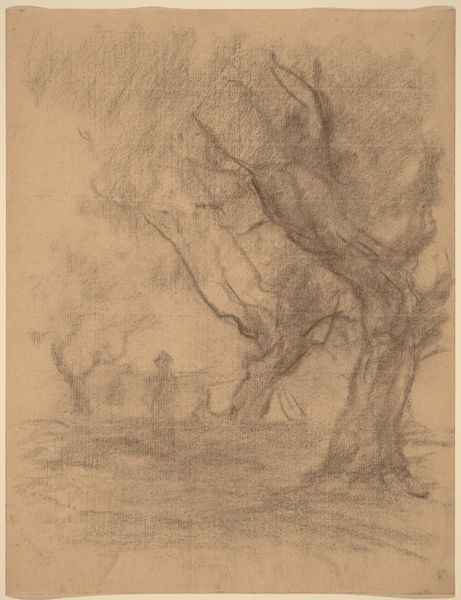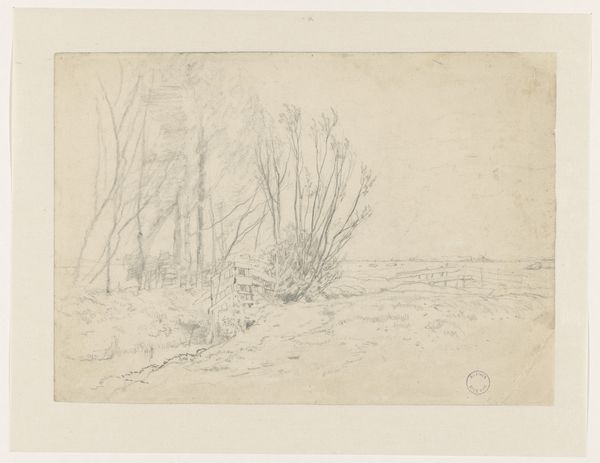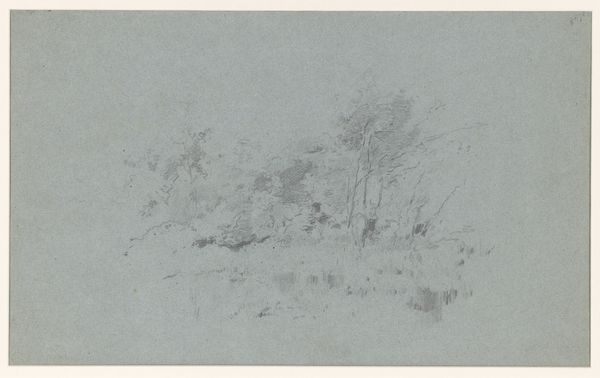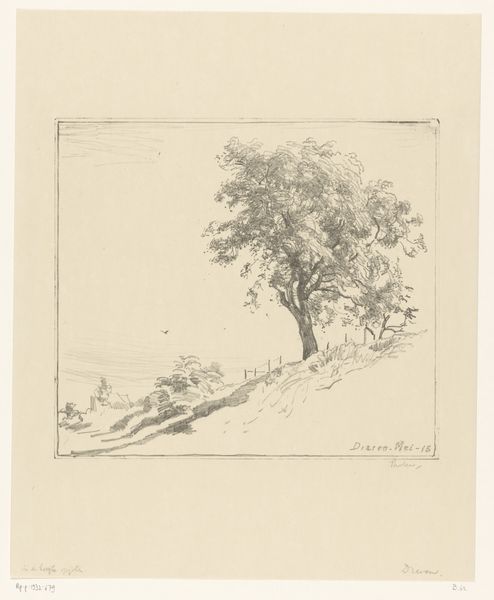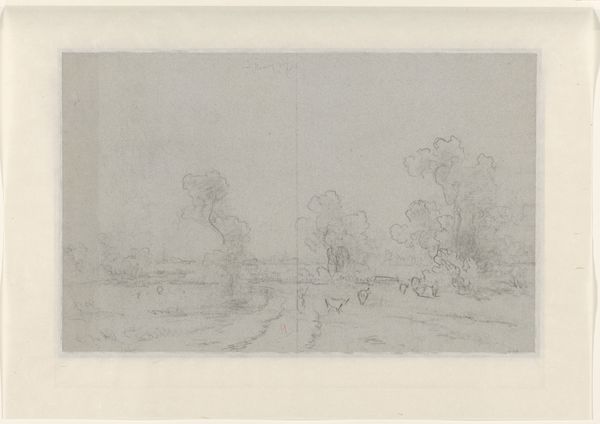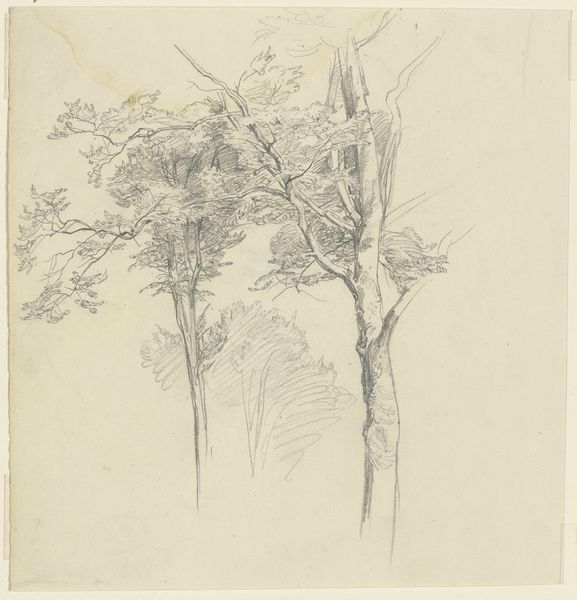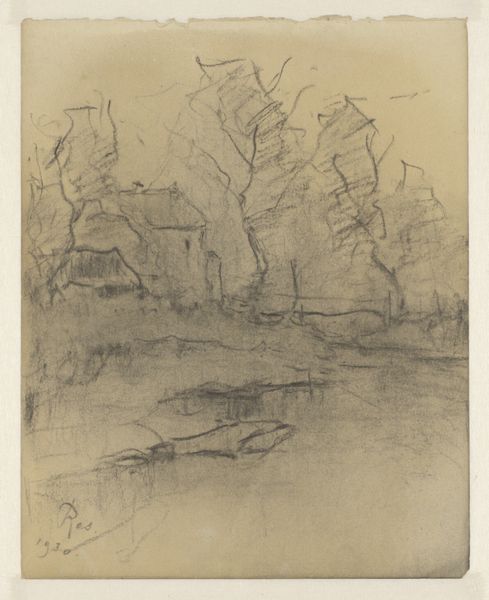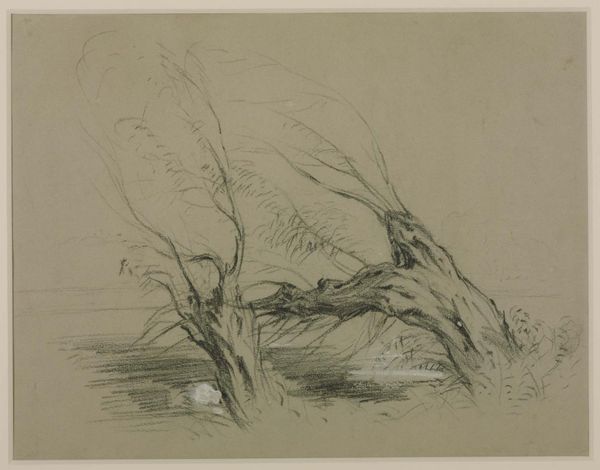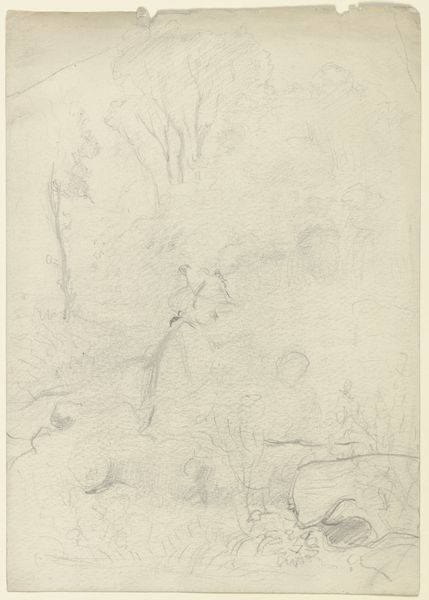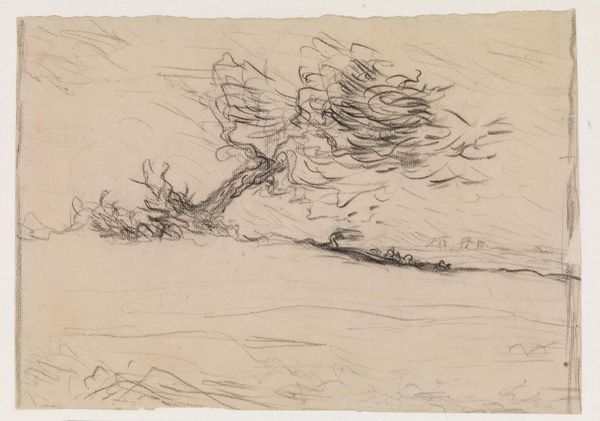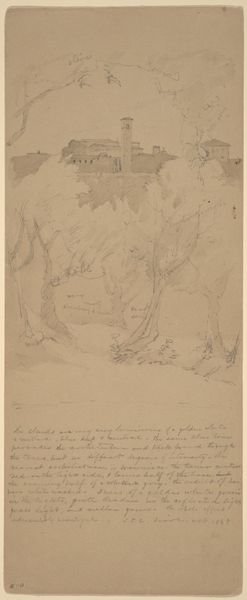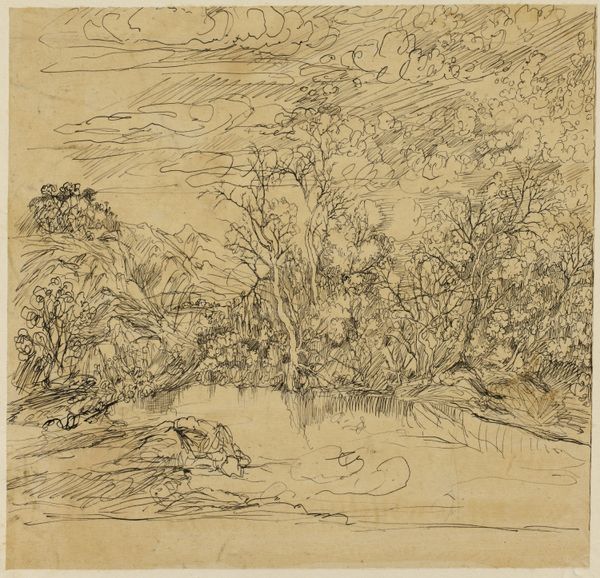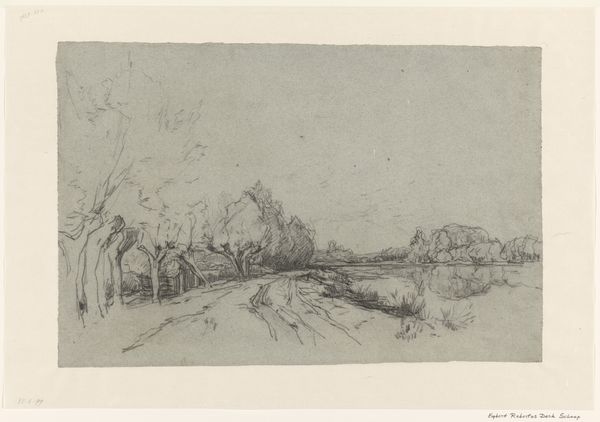
#
light pencil work
#
pencil sketch
#
incomplete sketchy
#
etching
#
ink drawing experimentation
#
pen-ink sketch
#
sketchbook drawing
#
watercolour illustration
#
sketchbook art
#
watercolor
Dimensions: height 427 mm, width 357 mm
Copyright: Rijks Museum: Open Domain
Editor: Here we have Andreas Schelfhout’s “Sketch of trees along a road,” made sometime between 1797 and 1870. It's a delicate pencil drawing. I'm struck by its airy quality, almost ephemeral. How would you interpret it? Curator: Let’s consider this drawing as a record of labor. Pencil sketches like this were fundamentally about translating the three-dimensional world into a reproducible image, think of it in relation to mass media print. How does Schelfhout’s process of selection and reduction through sketching affect its inherent worth? Editor: That's interesting. It makes me consider what details he chose to include and leave out. Are those figures walking along the road relevant to this analysis? Curator: Precisely. The figures introduce a human element, a trace of society. How are they represented within the landscape and what do their presence and scale within it imply? Perhaps the drawing highlights a specific relationship between the human and natural worlds within that time and space. It emphasizes how they existed then, from the artist's point of view. Editor: So, instead of seeing this just as a simple sketch, we can see it as a product of the artist's labour, situated within a particular social context? And by looking at the *material* of the drawing, the pencil lines, the paper, we can ask deeper questions about its purpose and its value? Curator: Exactly. The artist is engaging with the landscape and translating this interaction into a commodity, as well as capturing the common workers. Considering the context reveals how the material creation process intertwines with economic and social realities of the time. Editor: That's given me a new way to think about sketches, seeing beyond just the image to its means of production. Curator: And appreciating how the artist turns both material and place into something new.
Comments
No comments
Be the first to comment and join the conversation on the ultimate creative platform.
